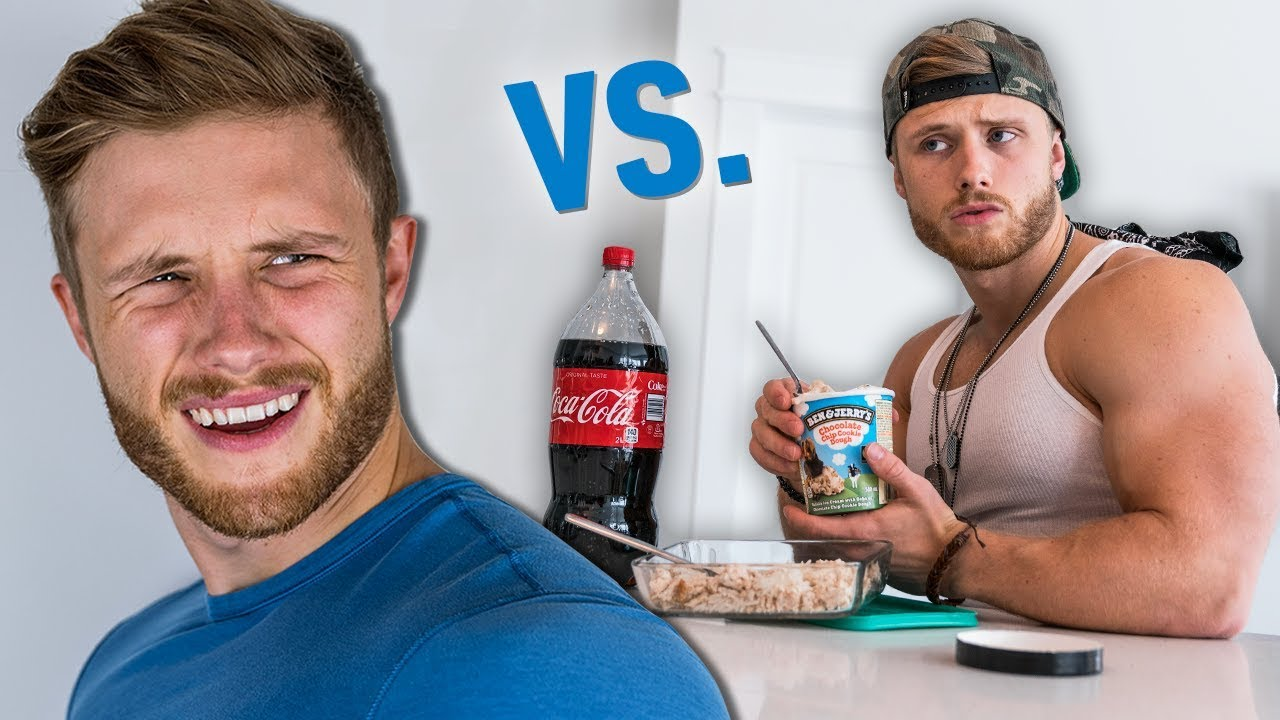When it comes to bodybuilding, few topics are surrounded by as much confusion as nutrition. Many self-proclaimed gurus spread outdated or exaggerated advice—often based on old-school bro science rather than solid evidence. Today, we’ll break down three of the most common bodybuilding nutrition rules, separating fact from fiction and replacing hype with science-backed recommendations.

1. “Eat as Much Protein as Possible for Maximum Muscle Growth”
The Myth
Some lifters believe that protein intake has no upper limit when it comes to muscle building. According to this philosophy, the more protein you cram into your diet, the more muscle you’ll build—sometimes leading people to consume 400–500 grams of protein daily.
The Reality
While adequate protein is crucial for muscle growth, there’s a clear point of diminishing returns. The average recommendation for athletes is far above the general public’s RDA of 0.8 g/kg of body weight (0.4 g/lb), which is too low for lifters. For optimal muscle protein synthesis, research supports around 1.6–2.2 g/kg (0.7–1.0 g/lb) per day.
For a 200-pound lifter, that’s about 160–200 grams of protein daily—more than enough to maximize muscle repair and growth. Going significantly higher doesn’t seem to build more muscle; it simply provides extra calories, which could be used for energy or stored as fat.
Meal Protein Limits
There’s also a misconception about how much protein your body can use in one sitting. While you can absorb very large amounts, muscle-building benefits seem to plateau after 20–40 grams per meal. Splitting protein across 3–6 meals is far more effective than trying to eat 200 grams at once.
Practical Recommendation
- Aim for 0.8–1.0 g of protein per pound of body weight if your goal is muscle gain.
- Spread protein across 3–5 meals daily for better utilization.
- There’s no need to eat absurd amounts—focus on consistency, not extremes.
2. “Carbs Don’t Make You Fat if They’re Clean”
The Myth
Many old-school bodybuilders claim that as long as your carbs come from “clean” sources—like rice, oats, or sweet potatoes—you can eat unlimited amounts without gaining fat. Some even argue that post-workout, you should spike insulin with high-carb meals to maximize recovery.
The Reality
Body fat gain is determined by caloric surplus, not the type of carbohydrate you consume. Whether your carbs come from rice or donuts, eating more calories than you burn will store excess energy as fat.
As for post-workout insulin spikes, the evidence shows that adding extra carbs after training doesn’t increase the muscle-building response beyond what protein already provides. Insulin is anti-catabolic (reducing muscle breakdown), but even moderate levels from a protein-rich meal are sufficient.
Glycogen replenishment—the primary argument for immediate carb loading—is also overstated. Typical bodybuilding workouts don’t deplete glycogen enough to require emergency refueling. Unless you’re training the same muscle group twice in one day or training fasted, there’s no urgency to slam carbs right after lifting.

Practical Recommendation
- Eat moderate carbs spread throughout the day, focusing on whole-food sources.
- Pre-workout and post-workout carbs can support energy and recovery, but timing isn’t critical for most lifters.
- The total daily calorie balance matters far more than “clean vs. dirty” carb choices.
3. “You Must Eat Big to Get Big”
The Myth
“Eat big, get big” is a mantra many lifters swear by, encouraging huge caloric surpluses (sometimes including junk food) under the belief that excess calories automatically translate into more muscle mass.
The Reality
Overeating will help you gain mass, but much of that mass will be body fat rather than lean muscle. Studies comparing large and moderate surpluses show minimal differences in muscle gain but significant differences in fat gain.
For natural lifters, muscle growth is driven primarily by progressive overload in training—nutrition simply supports that stimulus. Eating far beyond what’s necessary doesn’t speed up muscle growth; it just makes cutting harder later.
The only exception might be extreme hard gainers who struggle to eat enough calories to even maintain body weight. Even then, adding some calorie-dense foods can help, but dirty bulking often leads to a “skinny-fat” look rather than a muscular physique.
Practical Recommendation
- Use a moderate caloric surplus of about 250–500 calories per day.
- Aim to gain 0.5–1.5% of your body weight per month (e.g., 1–2 lbs for a 150-lb lifter).
- Focus on training progression—lifting heavier or increasing volume over time is what triggers muscle growth.
- Accept slower, leaner gains for better long-term results.

Final Thoughts: Building Muscle with Smart Nutrition
The best bodybuilding nutrition strategy isn’t about extremes—it’s about consistency, progressive training, and evidence-based eating habits. Here’s the summary:
✅ Protein: 0.8–1.0 g/lb body weight, spread across 3–5 meals.
✅ Carbs: Eat enough to fuel training, but total calories matter more than timing or “clean” carb myths.
✅ Calories: Use a moderate surplus to minimize fat gain while maximizing muscle growth.
If you want to build muscle efficiently, think long-term. Training progression drives growth; nutrition just supports the process. The “tortoise” approach—steady, smart, and sustainable—beats dirty bulking every time.



